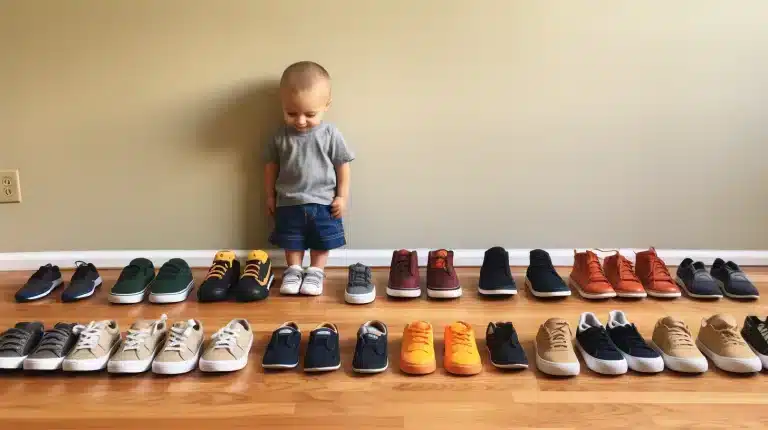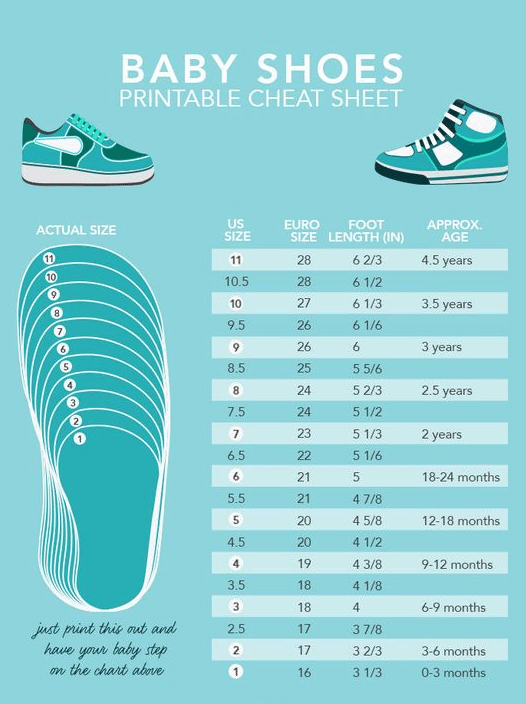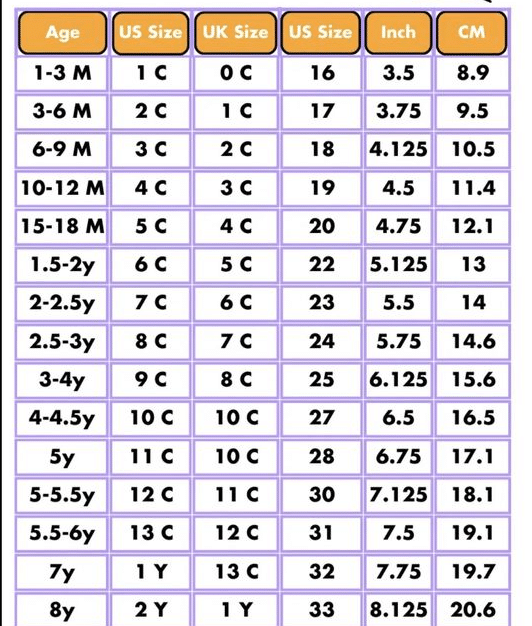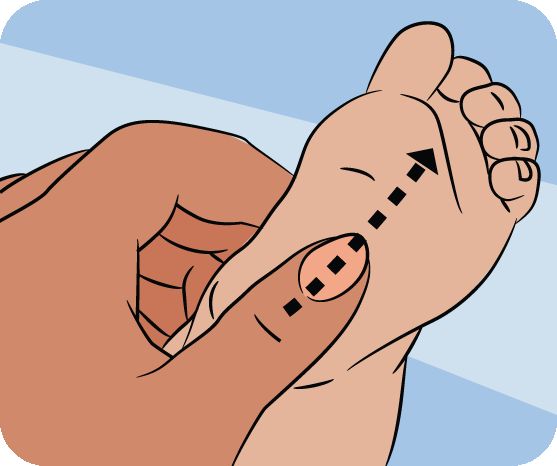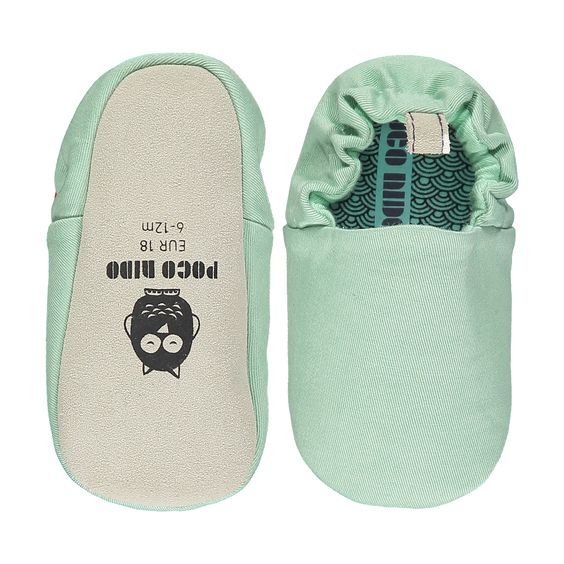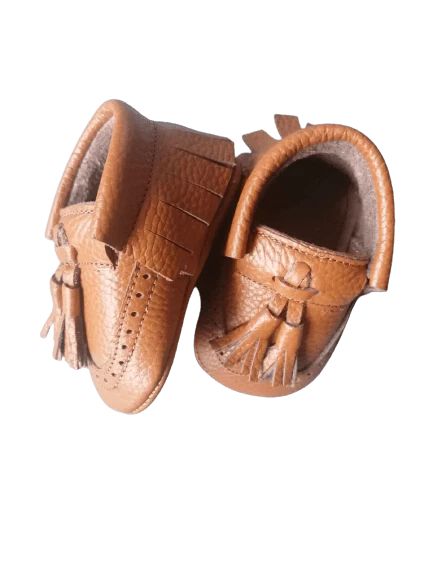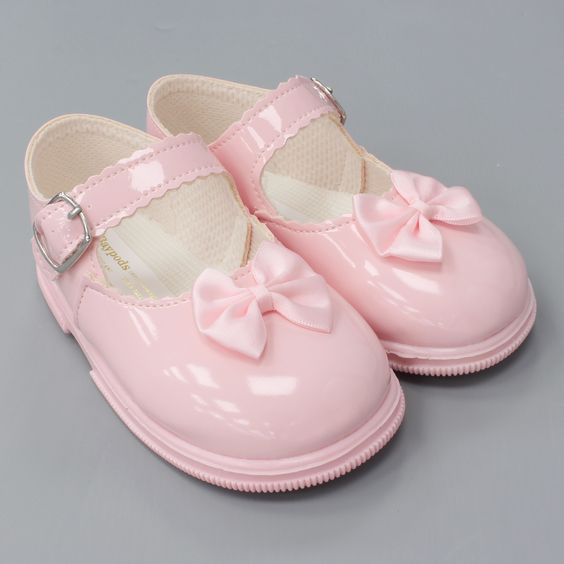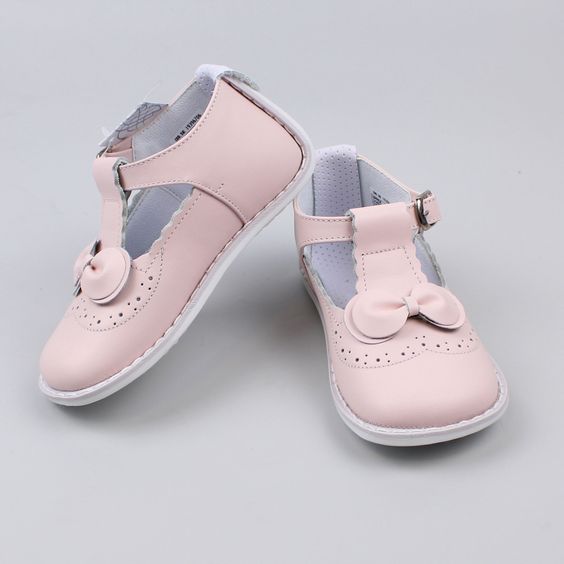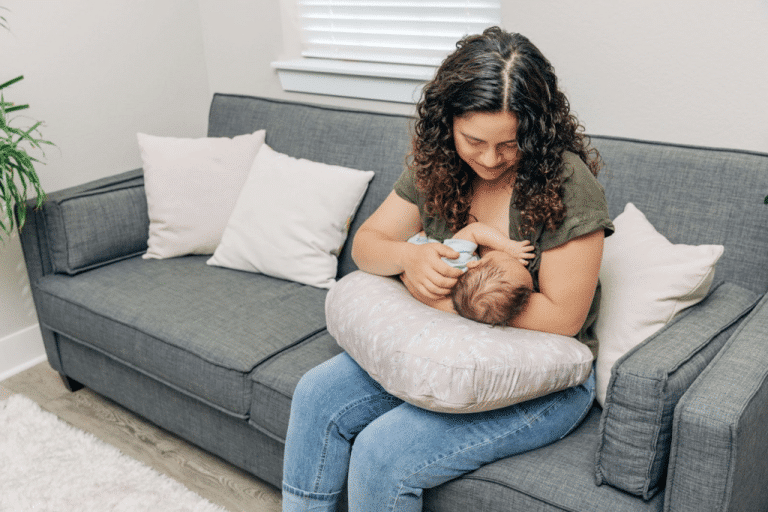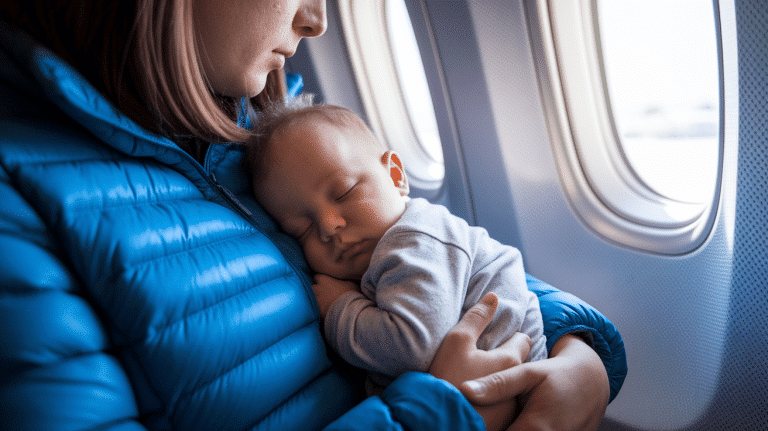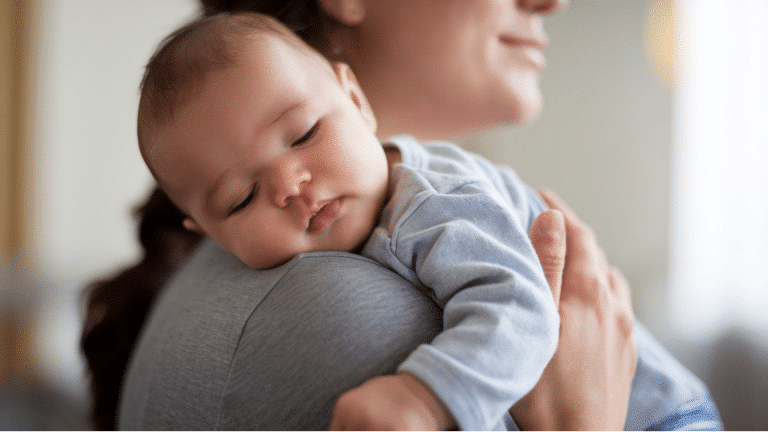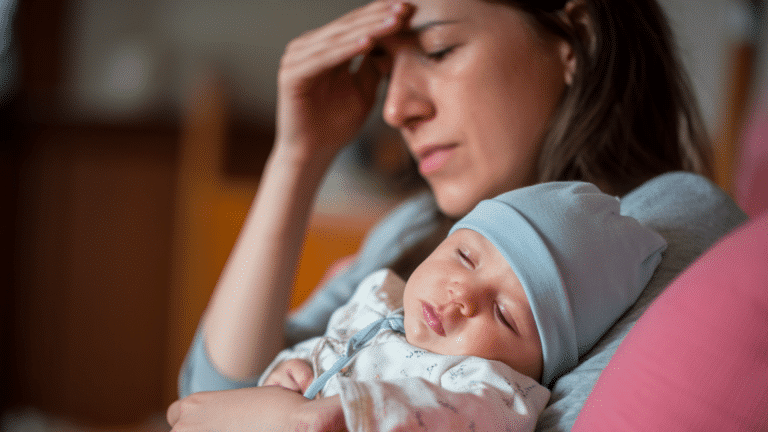Are you facing difficulty while choosing the perfect shoe size for your baby? Because finding the ideal fit can be challenging for parents when their child is young, and their feet are growing quickly. However, a baby shoe size chart is an excellent tool for streamlining this procedure and making educated judgments.
Parents can use this chart to ensure their kids’ feet are being taken care of, enabling them to explore and take their first steps easily and assuredly. Although they are not yet walking during the first six months of life, newborns may kick and extend their legs.
In this article, we have created a guide to help you in your journey of finding the right shoe size chart to the right shoe size for your kid.
Importance of Baby Shoe Size Chart
Despite how fragile a baby’s feet are, selecting the proper shoe size is essential to promote their growth and development. Uncomfortable shoes can also naturally impede the growth of the feet and potentially result in long-term foot issues.
As a result, it becomes crucial to use a standard baby shoe size chart that considers a child’s age, foot length, and foot width. It gives them a comfortable and healthy walking experience by preventing their tiny feet from being crowded or swimming in surplus space.
To safeguard their delicate feet and keep them warm and comfortable, booties or crib shoes that are flexible, soft, and breathable are perfect. Your infant may take those cute first steps around the age of one.
In early walking trips of babies, this joyful milestone necessitates shoes with greater structure and support. Choose shoes with flexible bottoms and a secure fastening method like Velcro and Laces to keep tiny feet sturdy and safe. Make sure there is space for their toes to move about without discomfort.
How to Use Baby’s Shoe Size Chart Accurately?
The first course of action is to avoid using shoes that have previously belonged to another child, even when hand-me-downs are economical. Because every child’s foot is different in size and shape, shoes that have been shaped to fit one child’s feet may not fit your child properly.
So the next step is to use the baby shoe size chart once you have the precise dimensions of your baby’s feet. This chart, which depicts the age range, foot length measurements, and associated shoe sizes, is useful. It is crucial to remember that shoe sizes can vary between manufacturers and styles while utilizing the chart. The dimensions you recorded are essential to ensure the proper shoe size.
Additionally, assess how your baby’s feet are growing and developing. The shoe’s longest toe and front should ideally be separated by about a thumb’s width. This allowance eliminates discomfort or potential foot issues while allowing for adequate room for natural growth.
If you do not have a size chart, plan to visit a shoe store as often as you can and have a professional measure your child’s feet. The appropriate size and fit may be found with their help, ensuring that your baby’s feet are well cared for during their early years.
How to Take Accurate Measurements of Baby’s Feet?
From 24 to 36 months, as your kid becomes more adept at walking, pick shoes with thicker, nonslip soles to keep their feet safe while they play and explore. Their feet are already expanding quickly at this point, as it’s crucial to routinely measure their shoe size and account for growth. Too tight shoes can restrict natural foot development and hurt your feet.
There are a few key recommendations to bear in mind when buying infant shoes. First and foremost, always choose high-quality footwear with breathable materials that offer sufficient support and stability. Since babies outgrow shoes quickly, we’ll construct shoes that support healthy foot development and endure longer.
Accurately measuring your baby’s little feet is crucial for ensuring their shoes fit them perfectly. Choosing shoes appropriate for our children’s growing feet is the first step in assuring their comfort and healthy growth as parents. To do this, you must perfect the skill of precisely measuring the baby’s feet.
To assist you in getting the most accurate foot measurements for your bundle of joy, here is a step-by-step guide:
1. Assemble Necessary Tools
Gather all the required equipment before starting the measurement process. You’ll need a soft measuring tape, some paper, and a pen to take the measurements.
2. Measure the Size Durin Afternoon
Due to their natural swelling, babies’ feet tend to be a little bigger in the afternoon. Plan to take the foot measurement to ensure the most precise measurements.
3. Try & Place a Foot on Paper
Lay the piece of paper on a flat surface after locking it. Place your infant so that their weight is equally distributed across both feet when they stand on the paper.
4. Mark the Longest Toe and Heel
Mark the top side of the longest toe on each foot and the back of the heel with the pen. Remember that the big toe may not always be the longest.
5. Measure the Final Length
After making both feet, measure the length between the two marks on the paper using a delicate measuring tape. Repeat this procedure for both feet for precision, as their size may differ somewhat.
6. Record the Final Length
Compare the lengths after taking measurements for both feet. There will typically be a small difference in siE between the two feet. When choosing the proper shoe size, it is imperative to take note of this larger dimension as the reference.
You can get accurate foot measurements for your infant by following these six steps, which will provide the groundwork for selecting the best-fitting shoe. Not just this, a baby shoe size chart is crucial for parents to ensure that their child’s feet are properly fitted and comfortable. Considering each development stage and accurate foot measurements can help you choose shoes with the right support and room for growth.
Parents can put their kids on the path to healthy foot growth and lifetime comfort when they invest in well-made, high-quality shoes and professional guidance. We should give our children the best care and encouragement they need when they take their first priceless steps so they can explore the world with assurance and delight.
How to Choose the Correct Shoes for Each Developing Stage?
Your baby’s footwear needs will change as they progress through different stages of development. Here are some of the main factors to take into account when choosing shoes for each stage:
1. 0 to 6 Months, Pre-Walkers Stage
Although the babies are not yet walking at this point, they may kick and extend their legs. Soft, flexible, and breathable booties or crib shoes are ideal to safeguard and keep their sensitive feet warm.
2. 6 to 12 Months, Crawlers Stage
Babies need shoes with soft soles that provide grip and support when they begin to pull themselves up and crawl. The development of their arches and the strengthening of their foot muscles both depend on this stage. Choose shoes composed of breathable, light materials that promote natural mobility and stimulate the senses.
3. 12 to 24 Months, Early Walkers Stage
Your infant needs shoes with additional structure and support after they take their first clumsy step. Choose footwear with flexible soles so their feet can naturally bend while learning. Their newfound movement will be aided by a reliable fastening device, such as Velcro or laces, which will keep their feet secure.
4. 24 to 36 Months, Confident Walkers Stage
Shoes with thicker, non-slip soles will help your youngster walk more confidently while protecting their feet during play and exploration. Their feet are now expanding quickly. Therefore, it’s crucial to routinely check their shoe size and allow for growth. Ensure their shoes have room for their toes to move freely and comfortably.
Additional Tips for Purchasing Baby Shoes
1. Focus on Quality
You can provide your baby’s feet with the right support and comfort by purchasing high-quality shoes. Baby shoes are rapidly outgrown, but well-made shoes are strong and will endure longer.
2. Try & Avoid Hand Me Downs
Avoid wearing shoes another child wears because each child’s foot form and size differ. Each baby’s feet should have shoes that are specifically made for them.
3. Think About Flexibility
Shoes should be adaptable to allow for normal foot development and movement. Restricted shoes can hamper the development of a child’s foot muscles.
4. Look for Professional Help
Visit a shoe store as often as possible, and have a professional measure your child’s feet. The skilled staff can offer helpful advice when determining the proper size and fit for your baby’s feet.
5. Verify the Toe Box of The Shoe
Ensure your baby’s toes can fit properly in the toe box, which is the front portion of the shoe. The toes may move freely in a toe box that is large and rounded, which encourages natural foot motion and prevents cramping toes.
6. Pay Attention to Shoe Material
Select Breathable, Natural Materials for your shoes, such as leather or canvas. These materials promote appropriate airflow, which lowers the possibility of uncomfortable or sweaty feet. Avoid synthetic textiles since they might cause skin discomfort by trapping moisture.
7. Think About Ankle Support
Shoes provide stability with cushioned collars and ankle support, which help to prevent ankle injuries. The importance of ankle support increases as your infant becomes more active and begins to walk confidently.
8. Always Test Flexibility
Before buying the shoes, evaluate their flexibility. To see if the shoe is flexible around the football, gently bend it in your hands. Proper foot movement and the development of the natural foot arch are supported by a shoe that blends easily at this spot.
9. Allow Space For Growth
Baby feet develop quickly, so picking shoes with appropriate room for expansion is crucial. Generally speaking, aim for an additional half-inch space between the longest toe and the front of the shoe. It guarantees that the shoe can grow with the wearer without sacrificing comfort.
You may improve the process of choosing the appropriate shoes for your baby by comfort for their developing feet. Your child can explore the world with excitement and confidence when they take their first steps and beyond if shoes are fitted properly and prioritize foot health.
Conclusion
To give your child the best pair of shoes, taking precise measurements of their feet during the growing period is essential. Parents can make choosing the ideal shoe size easier by using step-by-step instructions and a baby shoe size chart. During the early stage, shoes must fit properly; that’s the best way to assist your baby’s comfort.
When choosing the best shoes for your child, remember the value of spending money on high-quality shoes that provide flexibility and enough support. It’s important to remember that every child’s foot is different, needing properly fitted shoes for maximum comfort and foot health.
Choosing the right shoe for our children’s delicate feet is just one of the many ways we, parents, have the privilege and duty to give them the best care possible.
Frequently Asked Questions
When Should I Begin Referring to a Baby Shoe Size Chart for My Child?
Once your baby starts to walk or crawl, mainly between the ages of 6 to 12 months, you can utilize a baby shoe size chart. They need shoes that fit properly and promote their growth and movement because their feet are actively developing.
How Frequently Should I Examine the Size of My Baby’s Feet?
It is advised to measure a baby’s feet every two or three months, especially during the first year of life, because of how quickly they expand. By taking regular measures, you can track how big their feet are growing and ensure they are wearing the proper size shoes.
Can I Choose Baby Shoes Simply Based on Suggested Ages?
While age guidelines can be helpful as a general rule of thumb, It is not always enough to determine your baby’s shoe size. The sizes of baby shoes might change between brands and designs. Measuring their feet and consulting a baby shoe size chart is crucial to guarantee the greatest fit.
If My Baby’s Feet Are Different Sizes, What Should I Do?
Just like with adults, it’s perfectly common for babies to have slightly different-sized feet. When purchasing shoes in this situation, always refer to the measurements of the larger foot. To account for this variation, several shoe companies provide mixed-size alternatives where you can choose various sizes for the left and right foot.
When Choosing Infant Shoes, Should I Focus on Style or Functionality?
Putting utility over style when picking infant shoes is crucial, especially in the early stages of growth. Look for footwear that offers adequate support, flexibility, and space for expansion. But many reputable companies provide shoes that are fashionable and functional.

